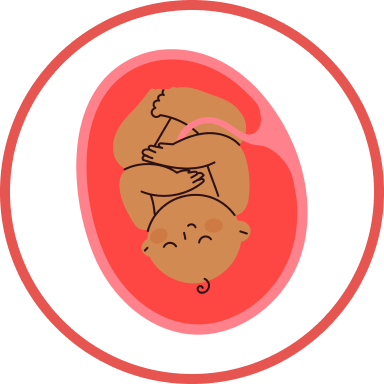Advancement during pregnancy is normally communicated in weeks. From the principal day of your last menstrual period before origination to the 6th day following that is viewed as “week 0”; from the seventh day is considered week 1, etc. Hence, the time before origination is remembered for the weekly tally.
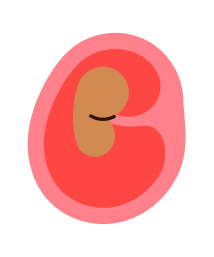
Ovulation happens around fourteen days after a menstrual period. At the point when the egg cell is fertilized during this stage and along these lines imbeds itself in the mass of the uterus, pregnancy is considered to have started. There is no adjustment in the size of the uterus yet.
Nonstop cell division of the egg happens at a fast pace, and at about two months the embryo turns into a fetus.
This is when women miss their period and realize that they are conceiving. Your body temperature will rise just as you are having a cold. You might also experience swelling in your breasts and darkening or areolas because of hormonal changes.
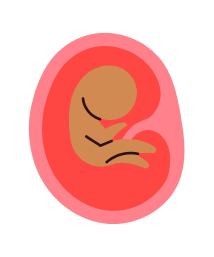
You will experience pain in your lower abdomen and your uterus expands, some mothers also experience morning sickness.
The fetus is around 2cm now, the heart has formed and the heartbeat can be checked.
During the third month, the uterus will be about fist size and the number of women having morning sickness will drastically increase. These symptoms will be at their strongest during the 11th and 12th week. Fortunately, most of the women will be done with these by the 15th week.
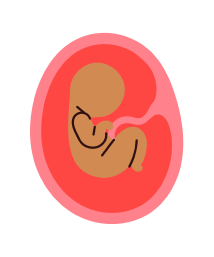
You will feel like going to the washroom more often because the increase in the size of your uterus will cause more pressure on the bladder. You’ll notice your lower abdomen and breasts getting taut. You will also notice an increase in vaginal discharge. This is the time when the risk of miscarriage is at its highest so you should refrain from indulging in heavy exercise or sports.
By this time, the fetus is 8sm long and weighs 20kg. Body parts are getting formed. The baby’s movement will start after the 8th week and by the 11th week, you’ll be able to hear the heartbeat using a stethoscope.
By this time, most of the women will have passed the morning sickness phase. You might notice pain and cramps in the upper leg joints because of the size of the uterus. An increase in the abdominal area will be noticeable externally.
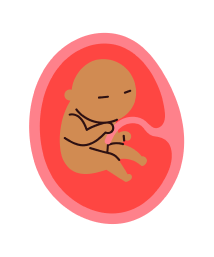
The possibility of miscarriage reduces greatly by the 14th week and the placenta has formed completely by this time.
By this time, arms and legs have been formed and the fetus can move freely in amniotic fluid. The weight of the fetus is around 100g and is about 15cm long. Internal organs have started to develop as well as bone and muscles. Moreover, the brain develops at a rapid pace, and the cerebrum and cerebellum form during this period.
This is when the most stable phase of pregnancy starts. By this time, the baby has started taking nutrients through the umbilical cord and the uterus has protruded as far as the navel, and pregnancy is now more noticeable.
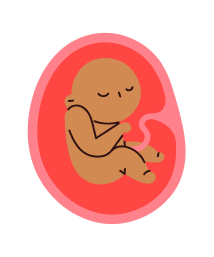
Breasts will gain considerable size and some mothers might feel the baby’s movement by the 18th week.
By this time, the baby’s size is about 25cm. The formation of nails and hair has begun and organs like ears, nose, and mouth are now more defined. You can also feel the heartbeat using a stethoscope.
By the sixth month, the fetus protrudes further and the baby’s movement can be felt easily. Blood pressure and the amount of blood both increase and mothers might feel rapid heartbeat due to an enlarged uterus. Shortness of breath is also a usual happening during this time. Due to the incredible size and weight of the abdomen, extra care must be taken to avoid backache.
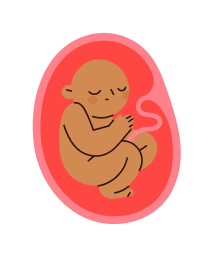
This is the time when some mothers experience a yellowish fluid discharge from their breasts. You might consider starting nipple-massage by this time.
By this time, the baby is around 30cm long and the weight is about 500g. The baby can open eyes now and has developed both eyebrows and eyelashes.
By now, the uterus growth has reached the region above the navel area. Your skin gets rigid and you’ll experience a rise in estrogenic hormones. You might also face constipation and other problems such as back pain due to excessive load on the middle and lower back.
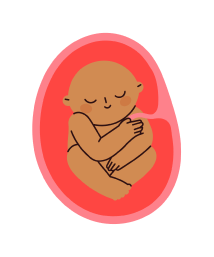
You should feel the fetal movement more frequently. You should visit your doctor if you do not feel it for a whole day.
By this time, the baby is around 35cm long and the weight is about 800g. The baby now has functioning eyes and ears and is not sensitive to sound and light. Moreover, the baby starts some fine movements as well, such as opening and closing hands and changing positions.
During this period, fetal movements increase excessively and can also cause pain or discomfort. Most of the fat develops during this time to protect the abdomen which causes stretch marks.
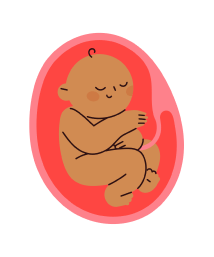
You might experience swelling in your arms and legs. It is normal to have it late in the day for a while. However, you might want to go to a doctor if it stays for longer periods. This can happen because of pregnancy toxicity (pre-eclampsia).
By this time, the baby is around 40cm long, the weight is about 1500g, and is taking its final form. You will be able to figure out the sex of the baby by this time using ultrasound.
This is the time when your uterus has reached the pit of the stomach and you might feel indigestion as well. You might also feel breathlessness and palpitations due to increased pressure on the heart and lungs.
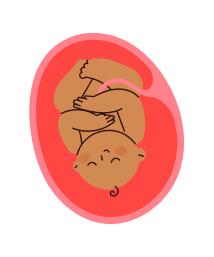
You might feel an uncontrollable urge to urinate frequently. That happens because the baby’s head presses the bladder. You might want to frequently change your undergarments to avoid cystitis. The baby’s head has now reached the pelvic bone so this might cause pain in the pubic bone and upper leg joints. This indicates that the delivery is near.
By now, the baby is around 45cm long and its weight is around 2200g. During this period, the baby drinks from the amniotic fluid and also urinates. Moreover, the baby also feels pleasure or displeasure depending on external factors.
The baby reaches down to the pelvis and the abdomen is well pronounced. It is also normal to have a temporary navel bump. This is the time when pain in the pubic bone gets intense.
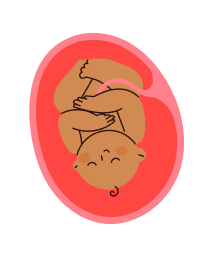
The vaginal discharge increases during this time and the opening to the uterus gets relaxed. Your abdomen might feel swollen multiple times during the day and you might also experience some pain. Feeling prelabour pain has also been noticed.
The baby’s length is around 50sm by now and the weight is about 3000g. This is the time when the baby is capable of breastfeeding because the muscles around the mouth have been formed. The baby is about to be born at any time now.
Approaching 4 months (4 to 15 weeks)
The development of the amniotic sac, which forms a protective shell over the fertilized egg, induces a number of sudden changes in the body during this trimester so you will experience excessive symptoms of nausea and vomiting if you are suffering from morning sickness.
You will also notice unpleasant sensations, swollen nipples, and darkening of nipples as well. Constipation, heartburn, and indigestion are also common symptoms for some women, as is an intensified need to urinate. During the first trimester, there isn’t much weight gain.

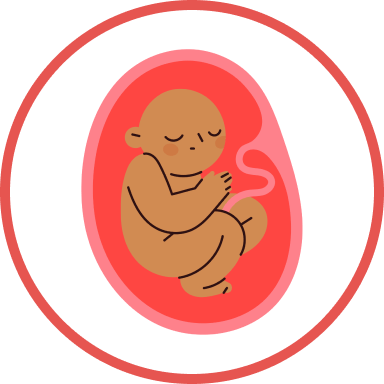
From 5 months (16 to 27 weeks)
For the majority of pregnant women, this is the most rewarding phase of their pregnancy. Your baby bump will begin to appear in your shirt, your first trimester morning sickness will begin to disappear, and your energy levels will begin to rise. When your uterus expands during birth, it places pressure on the muscles and ligaments in your lower abdomen, creating slight cramps.
Your facial skin can grow dark patches as a result of hormonal changes, and a dark line known as linea nigra may occur on your abdomen. Stretch marks may appear on the belly, legs, buttocks, and breasts as the skin and muscles stretch. It is important to maintain your oral hygiene while pregnant, as you may experience swollen and bleeding gums, as well as cavities due to tooth enamel loss.
From 8 months to childbirth (28 to 39 weeks)
The final weeks of your pregnancy are known as the third trimester. Your uterus stretches as your baby rises, changes, and begins to shift positions. Backaches, urinary incontinence, swelling knees, varicose veins, and hemorrhoids, as well as shortness of breath, can be more common, particularly when you lie down.
Your breasts may swell, and colostrum, the same fluid that will nourish your baby in the first few days of birth, will be discharged. In the final trimester of birth, you’ll probably feel clumsier and more exhausted. During this trimester, you may feel sciatica, or shooting nerve pain that runs from your lower back to your buttocks and down your thigh.
Braxton Hicks contractions, also known as “fake labor,” trigger stomach cramps, but this is just the body planning for birth and does not indicate that you are in labor. Light bleeding in the second trimester, on the other hand, might indicate that you’re about to give birth.
